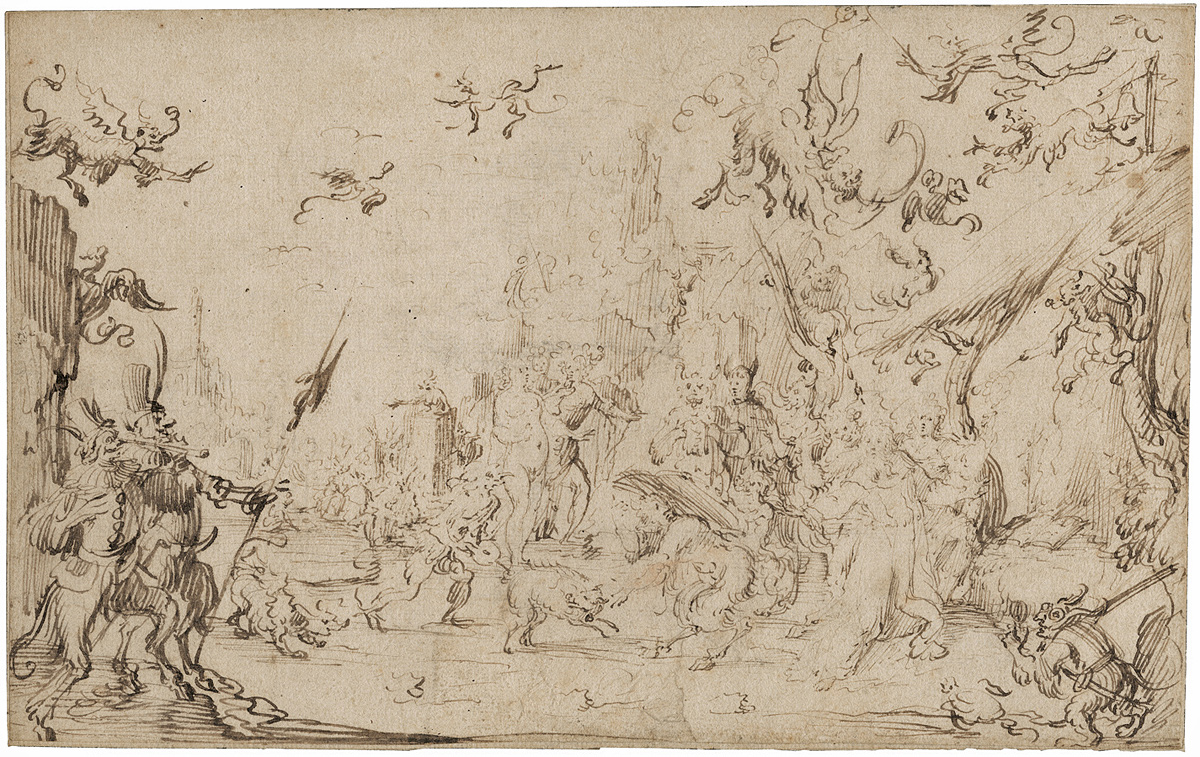Loading the page ...
Nicolas Cochin
(1610 Troyes – after 1649)
The Temptation of St. Anthony. Pen and brown ink over chalk. 15.9 x 25.5 cm. Ca. 1640.
There is very little biographical information on the peintre-graveur Nicolas Cochin. He was probably trained as a painter by his father in Troyes, later settling with his younger half-brother Noel in Paris where he became a prolific etcher. Since both brothers signed their prints with the same first initial, however, it is somewhat difficult to distinguish his work from that of Noel. The year of Nicolas’s death is also uncertain. According to Corrard de Bréban (Les graveurs troyens, Troyes-Paris 1868) Nicolas did not die until 1686, while the latest archival document concerning Nicolas’s life dates from 1649.
Cochin was deeply inspired by the art of Jacques Callot. Jean de Saint-Pères, a contemporary of Cochin, even claimed in 1657 that Callot himself had chosen Nicolas to be his legitimate artistic heir. Cochin was also influenced by the prints of Stefano della Bella, who had worked in Paris between 1639 and 1650, and whose compositions he frequently reinterpreted.
The present, remarkably virtuoso and dynamic drawing belongs to what was at that time the very popular genre of diableries. The sheet is a study for Cochin’s etching showing the Temptation of St. Anthony (BNIFF 20) dating from ca. 1640. The spontaneity of the sketched lines suggests that this drawing is a première idée. The model for this work was undoubtedly Callot’s large etched version of the same subject (Lieure 1416), executed in Nancy. Published in 1635 by the renowned print publisher Israel, the etching made a huge impression in its day. Nevertheless, Cochin developed a quite independent variant that stands comparison with Callot’s prototype. In contrast to Cochin’s etched version the drawn study here concentrates on the actual temptation of the saint. The rocky landscape in the background and the lush, decorative foliage of the trees have been omitted. The saint is surrounded by a bizarre scene of pandemonium, one suggestive of the imagined world of Hieronymus Bosch. A nude young female figure offers herself to the hermit, while he turns away with a gesture of horror. Another woman behind St. Anthony, seen holding a mirror, can be identified as the personification of Vanity. In the left foreground are two dancing devils, one playing the flute, the other in armor. Both appear in slightly altered form in Cochin’s etching. The frightening creatures circling in the sky also appear in the etching and lend the image another bizarre element.
I would like to thank Dr. Maxime Préaud, Paris for his valuable information concerning this drawing.
